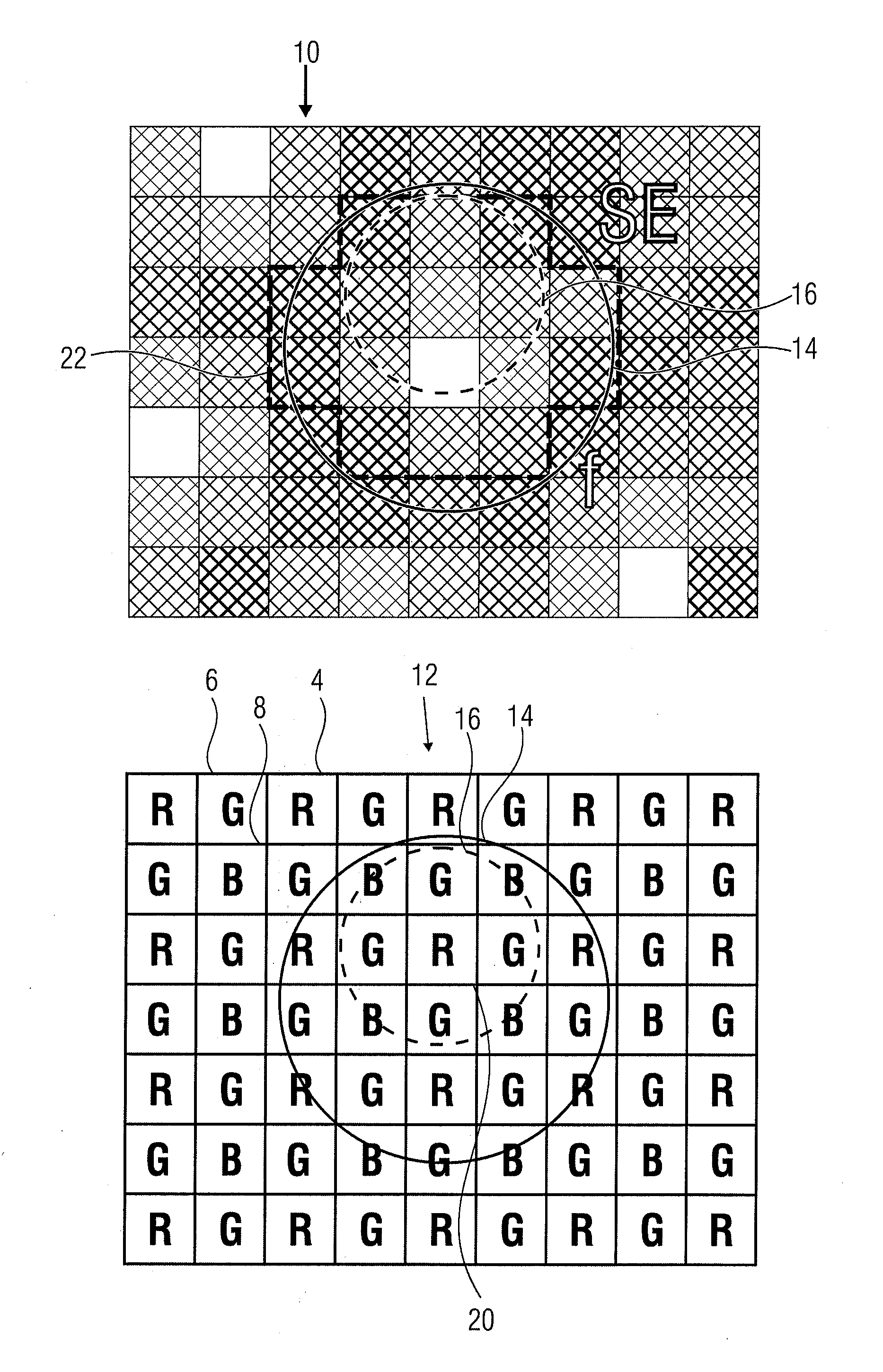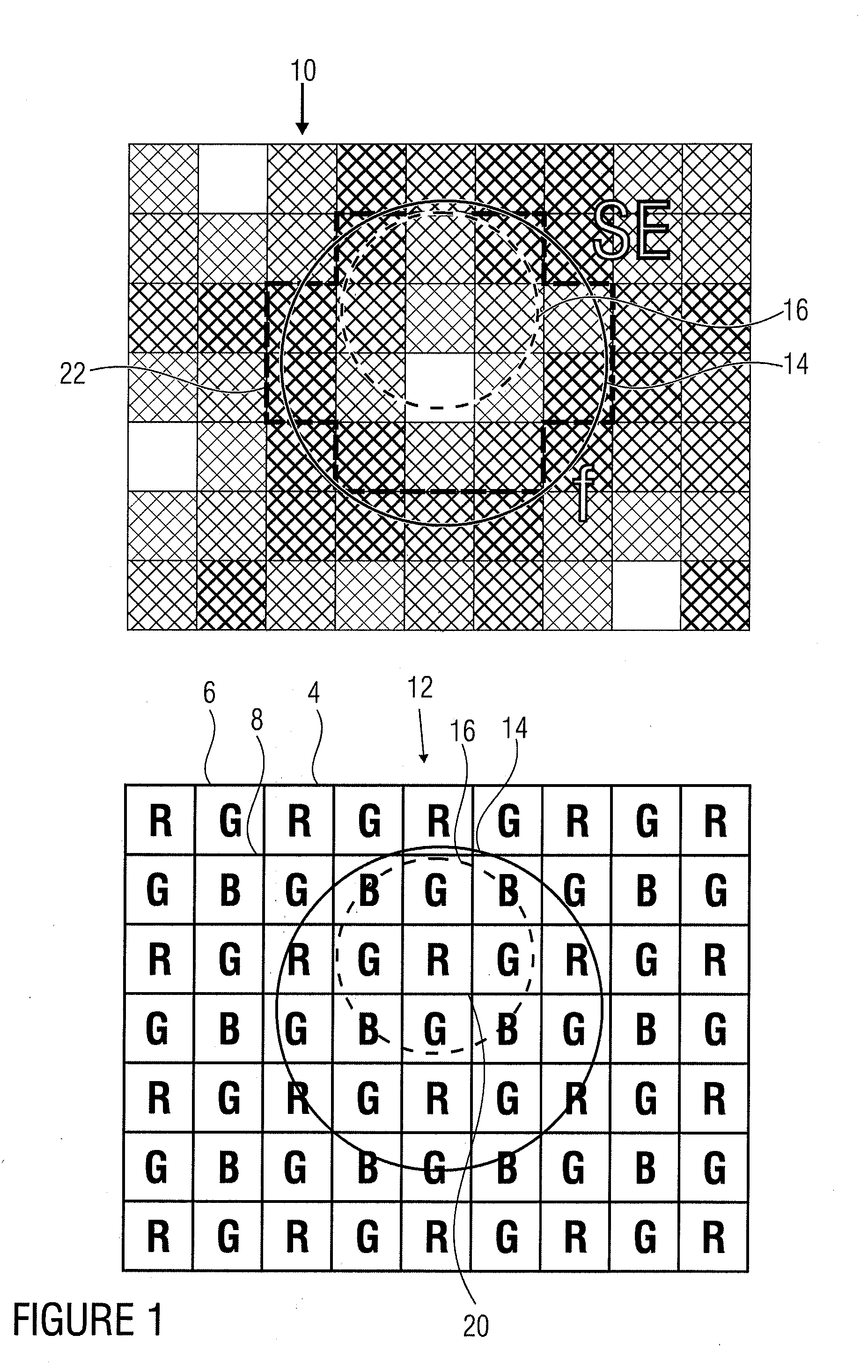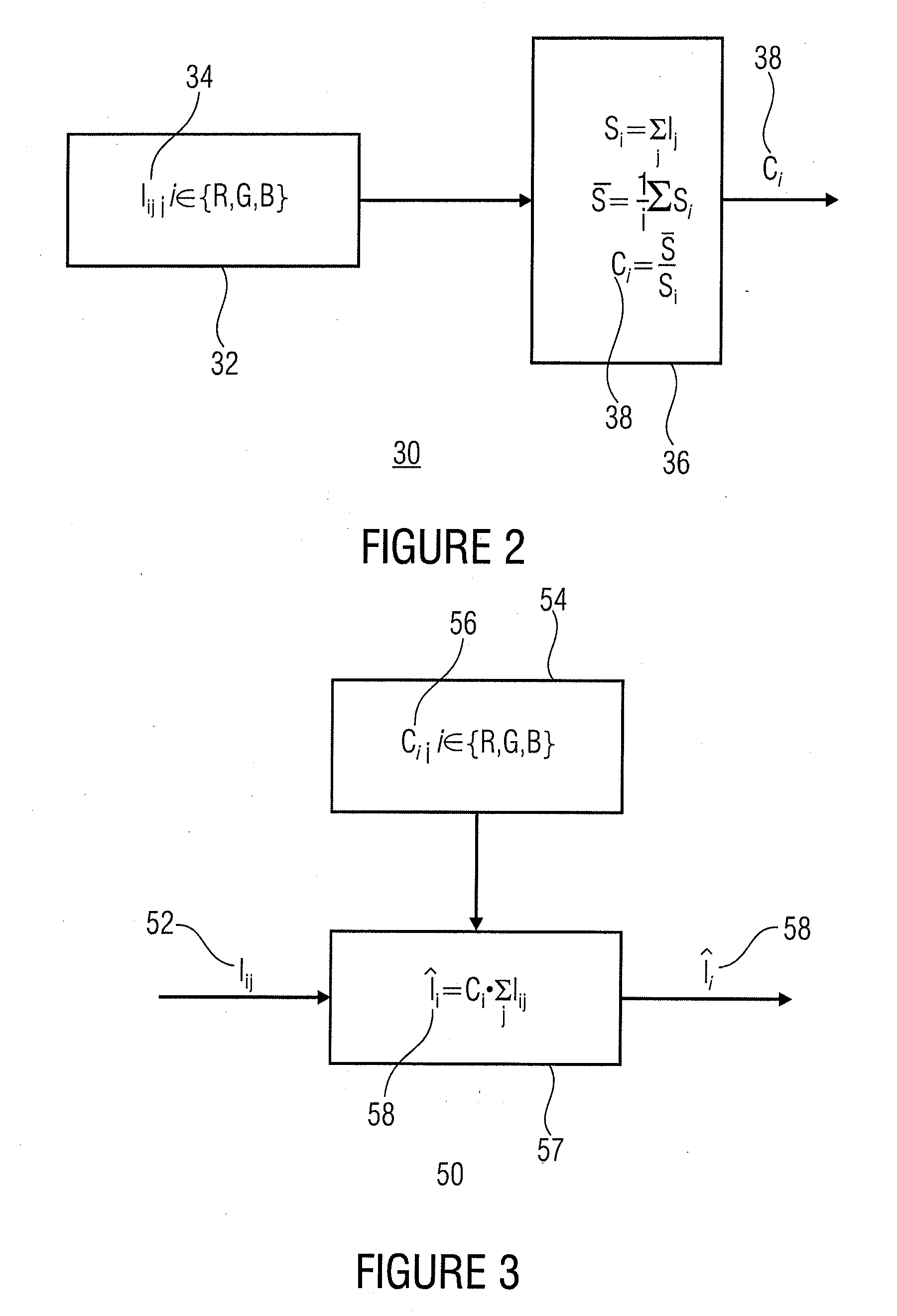Device and method for compensating color shifts in fiber-optic imaging systems
a fiber-optic imaging and compensating device technology, applied in the field of devices and methods for compensating color shifts, can solve the problems of affecting the use of such devices, unable to achieve an actual increase in image resolution, and many applications in the field of diagnostics, inspection, quality assurance and research, etc., to achieve the effect of increasing image quality
- Summary
- Abstract
- Description
- Claims
- Application Information
AI Technical Summary
Benefits of technology
Problems solved by technology
Method used
Image
Examples
Embodiment Construction
[0037]By way of example, FIG. 1 shows the image of an optical fiber on the surface of a sensor element arrangement consisting of sensor elements of different spectral sensitivities. By way of example, without limitation of general meaning, there is illustrated a sensor with sensor elements arranged in matrix shape, which are sensitive to red (sensor element 4 marked R, for example), green (sensor element 6 marked G, for example) and blue (sensor element 8 marked B, for example). In the arrangement shown in FIG. 1, the red, green and blue-sensitive pixels and / or sensor elements are arranged in the so-called Bayer pattern. This arrangement is to be construed as merely exemplary. Further embodiments of the invention may be based on any sensor arrangement, for example on matrix-shaped sensor arrangements with another geometric arrangement of the sensor elements sensitive to different spectral regions. Also, the individual sensor elements do not have to be square-shaped, they may be para...
PUM
 Login to View More
Login to View More Abstract
Description
Claims
Application Information
 Login to View More
Login to View More - R&D
- Intellectual Property
- Life Sciences
- Materials
- Tech Scout
- Unparalleled Data Quality
- Higher Quality Content
- 60% Fewer Hallucinations
Browse by: Latest US Patents, China's latest patents, Technical Efficacy Thesaurus, Application Domain, Technology Topic, Popular Technical Reports.
© 2025 PatSnap. All rights reserved.Legal|Privacy policy|Modern Slavery Act Transparency Statement|Sitemap|About US| Contact US: help@patsnap.com



